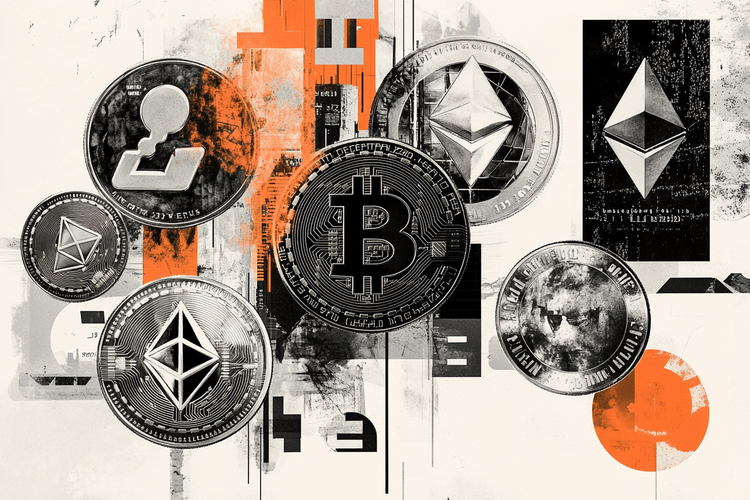Santander Plots Stablecoin Play—Because Traditional Banking Was Too Stable Anyway

Spain’s banking behemoth just caught crypto fever. Santander—the EU’s second-largest lender by market cap—is quietly building a stablecoin pipeline and prepping retail crypto access. No half-measures here: they’re going full ’if you can’t beat ’em, join ’em’ while regulators nap at the wheel.
From bailouts to blockchain
Insiders whisper the project’s already in ’advanced testing’—banker-speak for ’we bought a Ledger and named it innovation.’ The move follows BBVA’s earlier crypto dabble, proving even dinosaurs learn new tricks when revenue dips.
The fine print
Expect heavy-handed KYC wrapped in ’deFi empowerment’ marketing. Because nothing screams decentralization like a 37-page identity verification form. Santander’s play? Capture crypto natives before they realize real DeFi doesn’t ask for your mother’s maiden name.
As the banking world scrambles to tokenize everything that isn’t nailed down, one question remains: will they settle transactions faster than their mortgage approval desks?
Santander mulls stablecoin offerings
The Spanish lender’s digital bank, Openbank, has applied for licenses, seeking to provide access to crypto services under Markets in Crypto-Assets Regulation (MiCA), the European Union’s new regulatory framework.
According to a Bloomberg report, Santander’s stablecoins could be dominated in Euros and US Dollars. Dollar-pegged tokens have gained popularity among consumers and businesses, serving as a bridge between digital assets and the traditional financial system.
Economies with weaker currencies, including some nations in Latin America, where Santander has an expansive customer base, have adopted dollar-pegged tokens. People familiar with the plans, who were not named by Bloomberg, said the Spanish lender could issue its own stablecoin or provide access through an existing token.
Openbank operates in Spain and other European Union countries, including Portugal, the Netherlands and Germany. It is eyeing crypto services as early as next year, pending regulatory approvals.
Stablecoins are tokens designed to mirror the value of stable currencies, such as the USD, a basket of assets or fiat currencies. This asset class aims to offer a digital alternative to cryptocurrencies, which are often associated with high volatility, making them less suitable for everyday transactions.
Stablecoin market growth
The stablecoin market has grown, surpassing $250 billion in capitalization, led by Tether’s USDT, valued at $45 billion. Circle’s USDT is the second-largest token, valued at $9.6 billion, with USDS coming in third place at $4.7 billion.
President Donald Trump’s administration has given the cryptocurrency industry special attention, leading to a significant growth in interest in stablecoins. Top American banks, including JPMorgan, Bank of America, Citigroup and Wells Fargo, announced last week that they are working on a joint stablecoin launch.
The interest in stablecoin issuance follows the advancement of the Guiding and Establishing National Innovation for US Stablecoins (GENIUS) Act in the US Senate.
The bipartisan bill, sponsored by Senators Bill Hagerty, Cynthia Lummis, Kirsten Gillibrand and Tim Scott, is expected to play a significant role in modernizing payment rails in the US and ensure the country remains at the forefront of financial innovation.
Cryptocurrency prices FAQs
How do new token launches or listings affect cryptocurrency prices?
Token launches influence demand and adoption among market participants. Listings on crypto exchanges deepen the liquidity for an asset and add new participants to an asset’s network. This is typically bullish for a digital asset.
How do hacks affect cryptocurrency prices?
A hack is an event in which an attacker captures a large volume of the asset from a DeFi bridge or hot wallet of an exchange or any other crypto platform via exploits, bugs or other methods. The exploiter then transfers these tokens out of the exchange platforms to ultimately sell or swap the assets for other cryptocurrencies or stablecoins. Such events often involve an en masse panic triggering a sell-off in the affected assets.
How do macroeconomic releases and events affect cryptocurrency prices?
Macroeconomic events like the US Federal Reserve’s decision on interest rates influence crypto assets mainly through the direct impact they have on the US Dollar. An increase in interest rate typically negatively influences Bitcoin and altcoin prices, and vice versa. If the US Dollar index declines, risk assets and associated leverage for trading gets cheaper, in turn driving crypto prices higher.
How do major crypto upgrades like halvings, hard forks affect cryptocurrency prices?
Halvings are typically considered bullish events as they slash the block reward in half for miners, constricting the supply of the asset. At consistent demand if the supply reduces, the asset’s price climbs.

